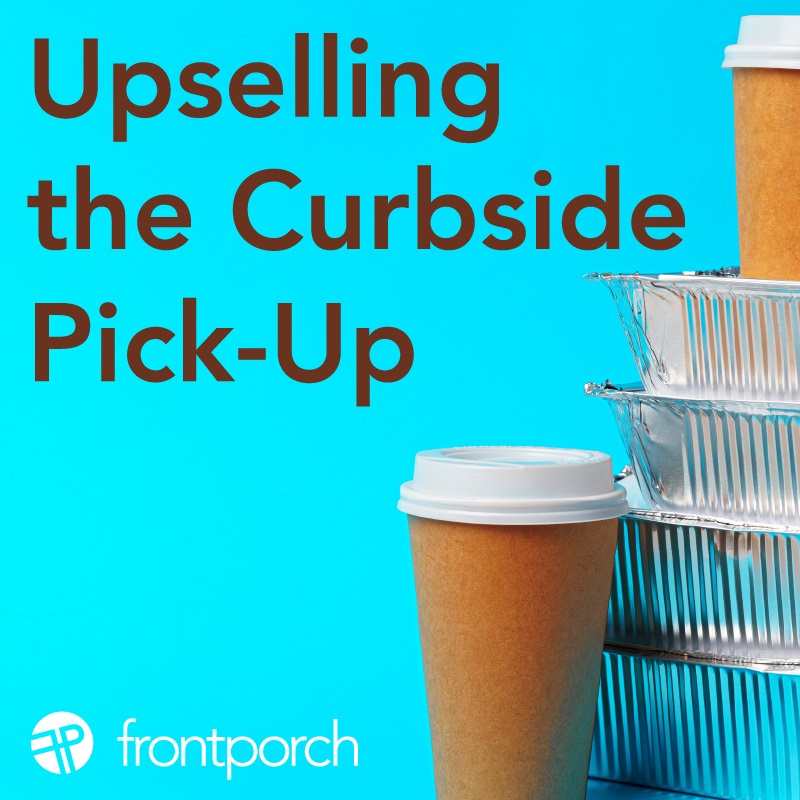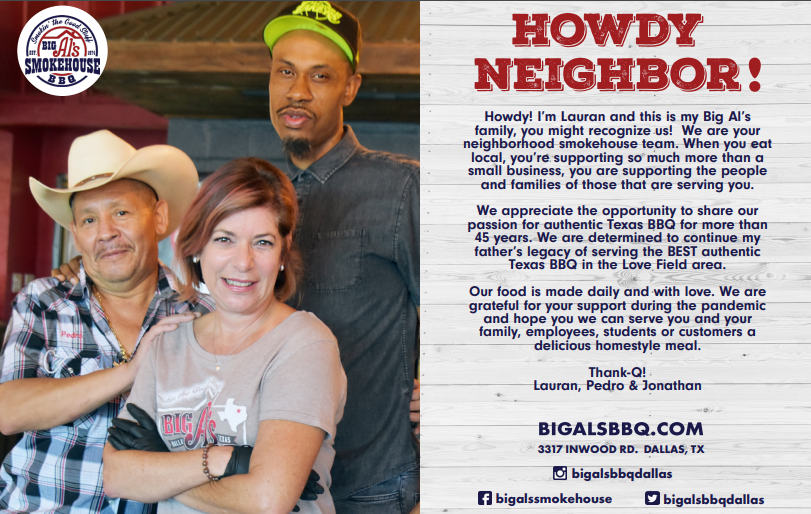Curbside Sales for restaurants and retailers appear to be here to stay – so think upselling, at least for a while. Your customers still crave your product. But, they want to enjoy the purchase and the consumption of it in their own homes. The simplest way to keep retail and restaurant doors open is curbside service.

Rather than shopping in your store, customers can order on line or by phone. Then, they can swing by your store as you bring their package to their car. Instead of dining in your restaurant this evening, customers are calling in their order. The customer then pulls up to your curb 15-20 minutes later ready to take their meal home.
Curbside pick-up – partnered with on-line or phone ordering – gives restaurants and retailers an effective way to keep selling. Indeed when things open back up again, this is also a new way to increase sales to an additional audience beyond the traditional in-store or in-restaurant customer.
Pick-up is not a new practice, but it is one that has been quickly honed during the pandemic.
There are best practices for curbside sales that will benefit both the customer and the business owner. Keep in mind that the easier you make things for your currently stressed-out customer, the more likely they are to return for this convenience again and again.
Get ready for curbside pick-up by optimizing your website and social media
- Get your website, customer email and social media up to speed. Make sure your customers know you offer curbside service and how that works is a way of upselling. Put this information on the homepage of your site. Build a separate landing page for curbside and link to that on your social platforms. Zanata Restaurant in Rockwall added a pop-up talking about Curbside Pick-up on its homepage.
- Remind customers weekly on social about curbside service. Consider having a weekly curbside special with a great photo of the item and the deal.
- Build community with your customers. Encourage them to take a picture of their purchase (food or clothing or whatever it is) and tag your store on social media. Then you in turn repost their picture thanking them publicly. This is called “User Generated Content” and is a best practice by big and small brands alike.
Make the ordering process easy for everyone
- When customers are ready to order, provide an on-site phone number for the customer to call or text to let you know that they are at your curb ready to pick up their order.
- Process payments in advance either on the phone or via your website or app. Keep the transaction at the curbside swift and contactless. If you must transact at the curb invest in a mobile card processor.
- At the time of order, ask your customer for their type and color of car picking up, and a description of the driver for clear instructions to deliver the right order to the right car.
- Designate a parking space or a specific spot as the curb service pickup area. Mark this area with signage that has clear instructions and the on-site phone number for the customer to call once they have arrived.
- Create a designated table inside to place curbside orders to streamline delivery during busy times. Have plastic ware, extra sauces, etc here to add to bags for food orders. Add tissue and gift bags here for retail merchandise.
- If you have the outside space to create a pop-up drive thru, this format can make things easier for both the customer and the business for upselling. Emporium Pies in Bishop Arts District built a pop-up “Pie-Thru.” Customers get pie without leaving their cars, mimicking their famous long line of people waiting to get pie on any given weekend.
Upselling: Keep them coming back for more
- Restaurants: include an order menu in the bag with the take-away food to make it easy for the customer to order again. Hand write a thank you note on the menu. Let the customer know how much their order meant.
- Ask the customer if they’d like to add a gift card to their purchase to either use next time, or to share with a friend. Or, if the customer hits a certain dollar amount on an order, add a gift card to the order as a thank you. This gift card will act as a bounce back for them to return to your store again.
- Invest in higher quality to-go containers to maintain integrity of your dishes. Presentation and temperature are still important. Big Al’s Smokehouse BBQ packages every to-go order in tamper-proof, sealed packaging. Consider branding your to-go packaging with stickers or hand-written “Thank Yous.” Adding stickers with your store’s logo and phone number or website helps remind customers how to find you.
Think outside the to-go box for upselling

- Consider narrowing the selection of items to your restaurant’s most popular items to offer curbside to streamline delivery.
- Offer Family Meals versions of your most popular items. Make it easier for families to just order the “Daily Family Meal for Four” for instance.
- Package an appetizer-entrée-dessert. This is an easy to pick-up choice. Switch out this special weekly to allow for local availability of ingredients or a chance to use up what’s on hand.
- And of course, have staff deliver bags or packages to customers’ cars wearing branded masks.
- Add the ability for the customer to add grocery basics to their order: milk, eggs, butter, bread, fresh veggies. Saving them an extra trip to a store can earn you a more loyal customer.
Go above and beyond to offer an experience while they wait
- Live music outside adds enjoyment when guests come to pick up their order.
- Some restaurants, depending on TABC laws, offer drinks to go to sip on while you wait for your order.
- Customers can order ingredients for one of your signature dishes with instructions to learn how to make it themselves at home. Some restaurants have even staged events. Consumers buy the ingredients kit and then tune into a Zoom with the chef to make from home.
There are more North Texas restaurants good to go best practices for how to do curbside service right by upselling. And there are several ideas for optimizing the outdoor space you do have. Re-imagine how to use it for curbside service and outside sales.
You can successfully make this way of doing business good for your bottom line.

